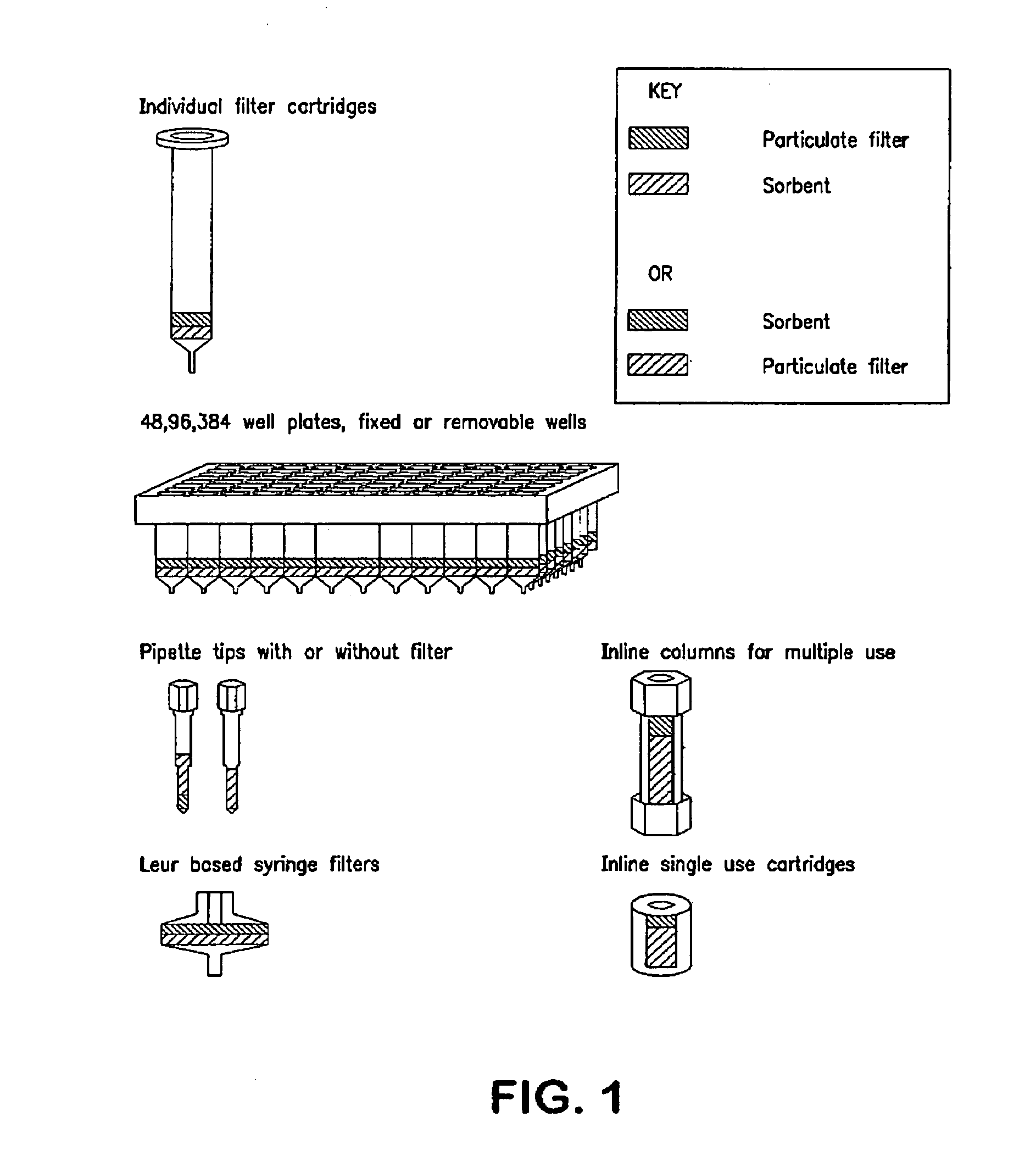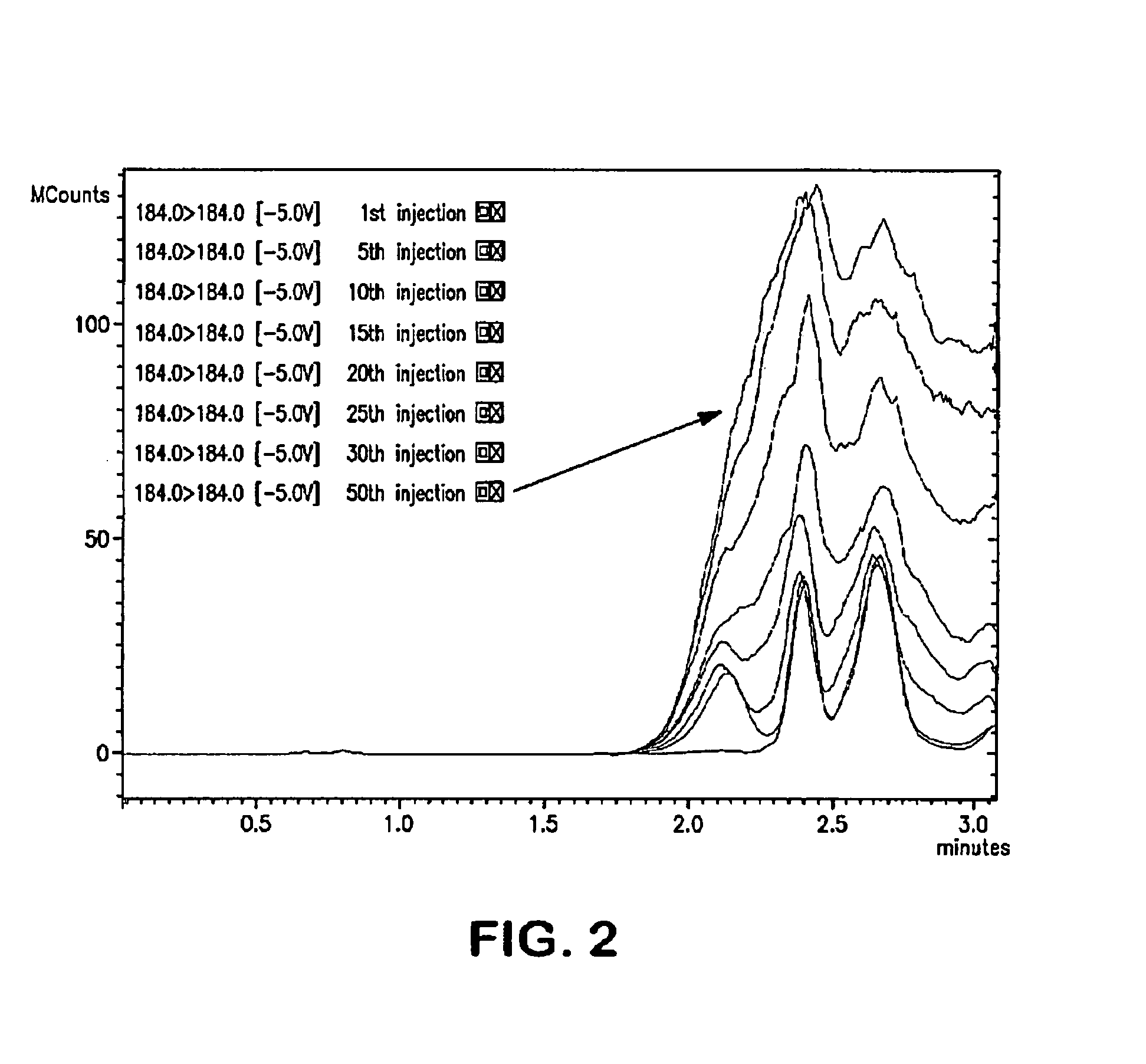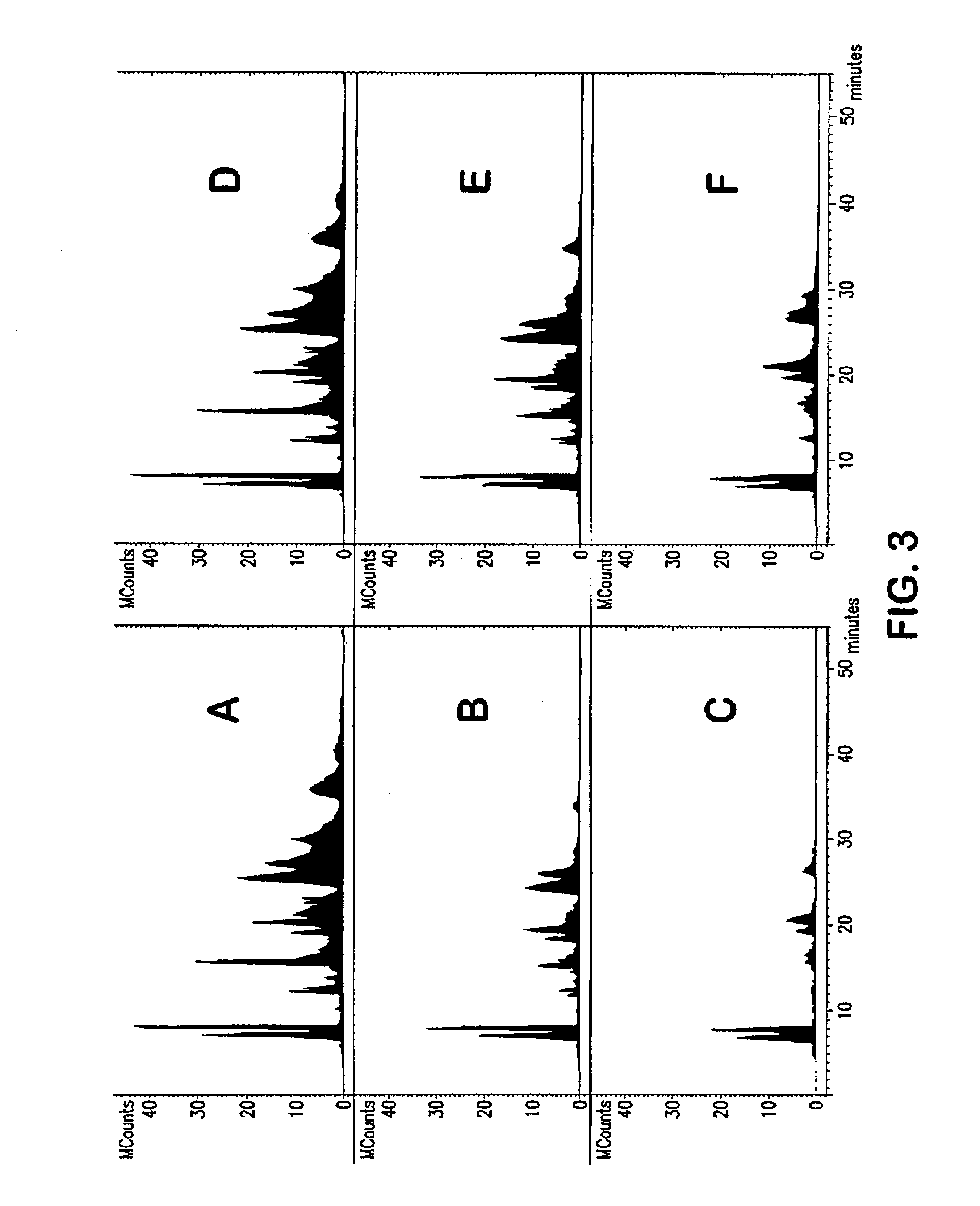Devices and methods for reducing matrix effects
a matrix effect and matrix technology, applied in the field of bioanalytical samples, can solve the problems of reducing or increasing the sensitivity of bioanalytical testing and quantification methods, reducing the sensitivity of analytes, and reducing the sensitivity of bioanalytical samples, so as to achieve the effect of reducing the matrix effect of bioanalytical samples
- Summary
- Abstract
- Description
- Claims
- Application Information
AI Technical Summary
Benefits of technology
Problems solved by technology
Method used
Image
Examples
example 1
Phospholipid Build Up on a Chromatography Column
[0146]Dilute porcine plasma was injected into a polar modified C18-A HPLC column (40 mm×4.0 mm), and plasma constituents were eluted using a gradient program of ACN and 0.1% formic acid ramping from 10% to 90% ACN in 1 min after a 40 second hold. High organic elution was held for 40 seconds before returning to 10% to re-equilibrate the column (see Table 13).
[0147]The results are shown in FIG. 2, which demonstrates that the phospholipids (phosphatidylcholine) gradually accumulate on the column over the course of 50 injections. LC-MS / MS traces are shown with detection of the phosphatidylcholine eluition at m / z 184.0→184.0 according to the method described by Little (2006) J. Chromatog. 833, 219).
example 2
Correlation of Analyte Detection With Phosphatidylcholine and Tween 80 Removal by Various Sorbents
[0148]A comparison of the abilities of various sorbents to remove phospholipids and the surfactant Tween 80 was performed. Porcine plasma samples (0.2 ml) were treated to precipitate proteins by the addition of either acetonitrile (ACN) or 1.0% formic acid in ACN (0.6 ml), then centrifuged to remove precipitated proteins (Sorvall 50 ml rotor 5000 rpm 20 min). The supernatants were removed and spiked with the following pharmaceutical analytes: zolpidem, warfarin, quinidine, sulindac, loratadine, loperamide and Tween 80 (5 mg / ml). The spiked plasma samples were then filtered through a test sorbent: either ND 06262, ND 06265, ND 06267 (instrAction GmbH, Ludwigshafen, Del.), or Polaris® C18-Amide (Varian, Inc., Palo Alto, Calif.) 10 μm silica beads. Sorbents were assembled on top of a Captiva® 0.45 μm membrane into a collection plate (10 mg or 20 mg sorbents). Ten μl aliquots were analyzed ...
example 3
Surfactant Removal from Protein Precipitated Samples
[0158]Porcine plasma samples were spiked with analytes (Zolpidem, Warfarin, Sulindac, Loratadine, Vardenafil) to 1 ppm, together with surfactants (Triton X 100, Tween 80, and Sodium dodecyl sulfate (SDS)) to a concentration of 1 mg / mL. Samples (200 μL) were precipitated using one of four treatments:[0159]400 μL 3% formic acid in acetonitrile (2:1)[0160]600 μL 3% formic acid in acetonitrile (3:1)[0161]400 μL 3% formic acid in methanol (2:1)[0162]600 μL 3% formic acid in methanol (3:1)
Samples were centrifuged at 14,000 rpm for 12 min in a mini-centrifuge. The supernatant was extracted as described in Example 2 using 20 mg Polaris® C18-A sorbent assembled on top of a Captiva® 0.45 μm membrane. Ten μl aliquots were analyzed by HPLC as described in Example 2 and Table 7 as shown below.
[0163]
TABLE 7HPLC Elution ProgramTime% BFlow rate (μl / min) 0.005350 1.005350 8:009035053:009035053:01535055:005350
[0164]Analytes were detected using the m...
PUM
| Property | Measurement | Unit |
|---|---|---|
| diameter | aaaaa | aaaaa |
| pore sizes | aaaaa | aaaaa |
| diameter | aaaaa | aaaaa |
Abstract
Description
Claims
Application Information
 Login to View More
Login to View More - R&D
- Intellectual Property
- Life Sciences
- Materials
- Tech Scout
- Unparalleled Data Quality
- Higher Quality Content
- 60% Fewer Hallucinations
Browse by: Latest US Patents, China's latest patents, Technical Efficacy Thesaurus, Application Domain, Technology Topic, Popular Technical Reports.
© 2025 PatSnap. All rights reserved.Legal|Privacy policy|Modern Slavery Act Transparency Statement|Sitemap|About US| Contact US: help@patsnap.com



